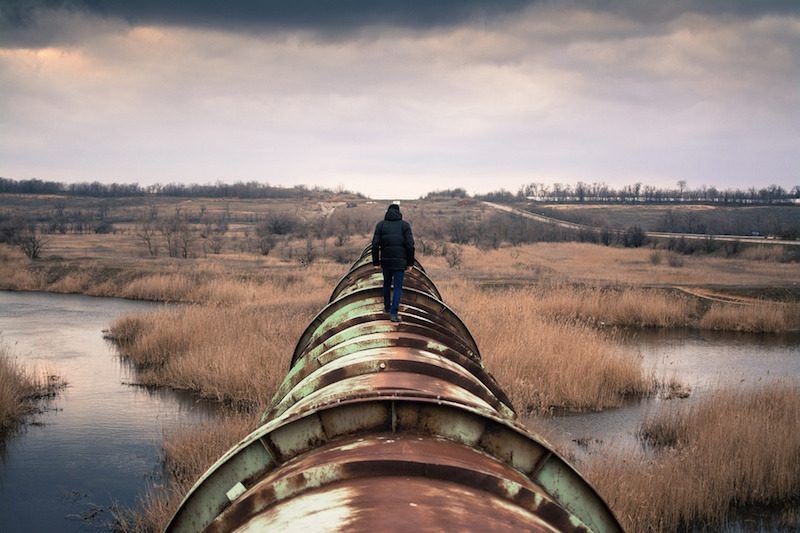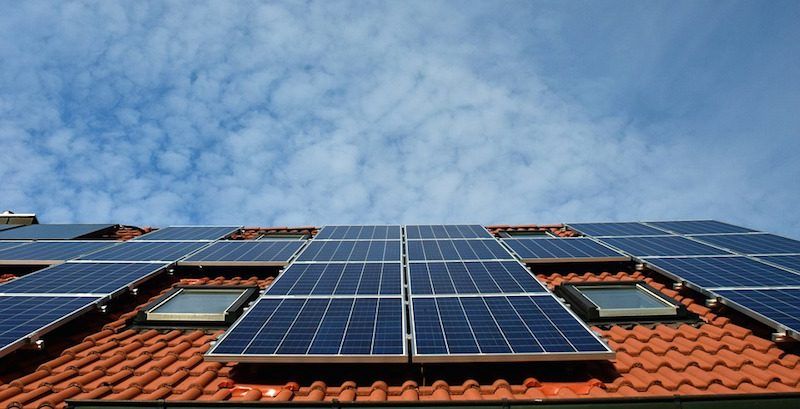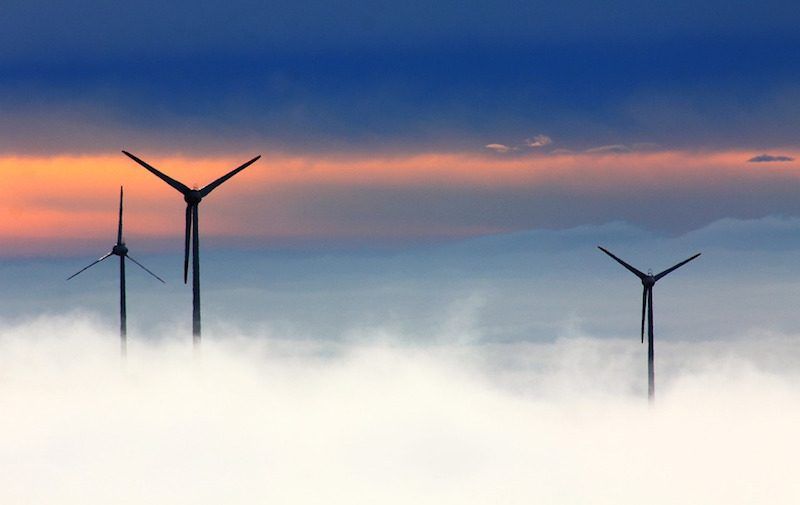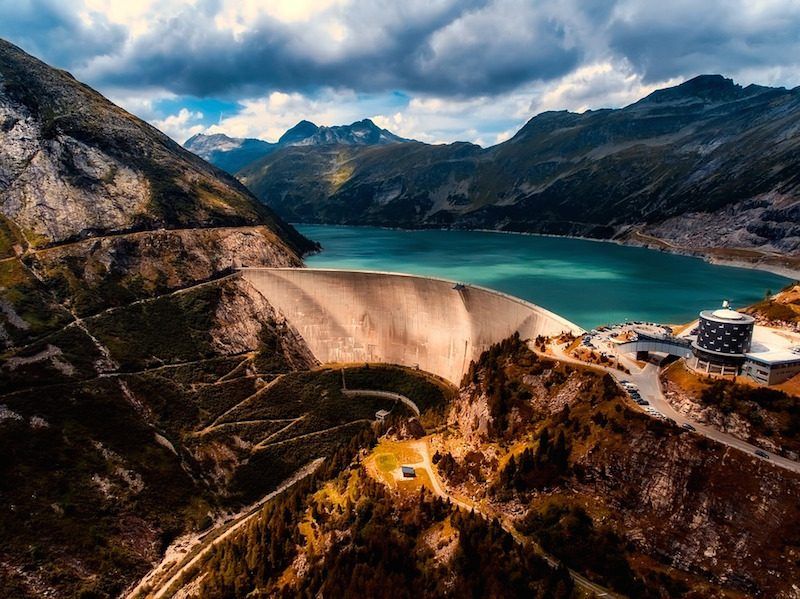We all know about how solar energy can help you retake the power from the evil electric company. While solar energy is one of the most high-tech and awesome upgrades any Southern California homeowner can make to their homes, did you know there’s a deep history of alternative energy on planet Earth?
Read on to learn the history of alternative energy and how today’s solar panels fit into the mix.

When did renewable energy start being used for power?
The history of renewable energy actually starts at the beginning of man harnessing energy for their own good.
Prior to the use of coal in the mid-18th century, most power was renewable. There simply wasn’t an efficient way to harness energy and transfer it outside of the immediate area it was being used or store it for later.
This led to creative solutions for powering things we take for granted today. For instance:
- Ships were powered and steered by the ocean’s currents and winds
- Watermills were used to power mills to crush grain, process materials, and shape iron
- Windmills were used to pump water for agricultural purposes

Proliferation of fossil fuels
While renewable energy delivered cheap power to an immediate area for a narrow purpose, it was not initially great at doing much beyond that. You could not extract wind or water current, so you were limited in where you could actually power the things you needed to power.
These limitations led to the use of fuels that you could mine, transport, and use to power things anywhere, most notably fossil fuels.
Coal changes the world
Other than the evolution of man, no single thing may have changed the course of planet Earth than the harnessing of coal as a power source.
While coal was reportedly used for heating and cooking in China going as far back as 2000 BC, the mid-18th century brought the use of coal into the mainstream.
There are actually 2 primary types of coal that changed history: Coking coal, used in the processing and production of iron and steel, and thermal coal, which provides energy.
While cooking coal made the production of machinery, tools, and many other things possible at a far more efficient rate, thermal coal is what led to the rapid expansion of humanity across the world through the advent of the steam engine.
Capable of powering trains, factories, and all sorts of things requiring mechanical power, thermal coal delivered what we needed to power the world into the future: a material that could be mined and transferred. Factories could now be powered away from rivers and trains could bring goods and people across the country without having to rely on horse drawn carriages.
Other popularized fossil fuel
While coal was the primary fossil fuel used to power the industrial revolution, many other forms of fossil fuels were popularized in this era, including:
- Natural gas: Primarily used to power street lamps, natural gas became a popular source of energy due to William Hart’s discovery of natural gas in Fredonia, NY. Unlike coal though, at that point natural gas could not be transported very far.
- Gasoline: With the Civil War over, petroleum, or gasoline, became a leading source of power in the United States. Standard Oil’s founding by John D. Rockefeller solidified petroleum as a monumental achievement in energy production and as a mainstay to the United State’s energy production and consumption.

When did the backlash to fossil fuels begin?
As early as the mid-1800s, people were starting to realize that many of the ways we powered our world would eventually run out. Given their finite nature, it became clear the resources we use to power the civilized word would be gone and a more sustainable solution would have to be found.
Furthermore, just a couple of decades later we realized that not only were fossil fuels going to run out, but that they were doing harm to our planet. Svante Arrhenius, a pioneering Swedish scientist, foresaw the Earth heating due to coal burning. While he did see it as a potential boon, he did prophesize the event. There were also clear and vivid reports throughout the 20th century about what would happen, including this one from a 1956 New York Times article.
What are the types of renewable energy and when did they gain ‘steam’?
These realizations, along with the fact that many of Earth’s renewable resources were used as a power source, led to the interest and investment in renewable sources of energy. Not only would renewable energy be good for the environment and never run out, but it would lead to cleaner air and new jobs.
There are 3 types of alternative energy that stand above the rest for their modern efficiency.

Solar power
Blending efficiency, truly environmentally friendly functionality, and the ability for homeowners to install panels in their own home, solar power stands above all “alternative” energy as a revolutionary technology.
The idea of solar power as an alternative energy source started in 1876, when William Grylls Adams discovered that when exposed to light, selenium produced electricity. While these cells were not anywhere close to efficient enough to power anything, it did prove that the energy from sunlight could be converted into harnessable energy.
In 1953, the first ever silicon solar cell was produced. While the origins of these cells are still used to this day, they were only powerful enough to run small devices. In the 70s, a new production method was introduced that brought the cost down and efficiency up, leading to expanded use in society.
Since then, improvements in efficiency and cost have only made solar power a more viable solution to consumers. So much so that California will require solar panels on all new homes by 2020.

Wind power
For centuries, windmills helped farmers pump water from streams to irrigate crops. Eventually, small communities used windmills to power homes and businesses that did not have great access to the power grid.
Interest largely waned until the gasoline shortages of the 1970s when the US government helped finance research for making wind energy more efficient. This led to the installation of thousands of wind turbines in the 1980’s in California. This program flourished, and now many states offer incentives to developers and utilities to invest in wind energy farms.
Today, around 7% of the electricity from the grid comes from wind power. Unfortunately, to leverage wind power you still need to get your power from the power utility.

Hydroelectric
Another source of energy that’s been used for centuries, hydroelectric power, also supplies power to utility companies. In the 1880s, direct current technology was first used with a water turbine.
Since then, hydroelectric power has turned into a major source of electricity in the United States. In 1936, the Hoover Dam was opened, which at the time was the biggest dam in the world.
While great for the environment, dams do provide some environmental issues. By stopping the flow of nutrients back into the ocean, dams have a major effect on the watersheds they are part of, negatively affecting the ecology of the region. They also deter upstream migration of certain species of fish, a major environmental and economic issue.
Join the revolution with your very own solar panels
Solar panels are a great way for you to help reduce the negative impacts of your energy use, save you money, and weasel out of the grip of the evil energy company.
Inter Faith has years of experience helping Southern California homeowners take control of their energy production and take back the power from the utility company.
Contact us today to learn how you can join the revolution.







Leave A Comment